How to Tell if Asparagus is Bad
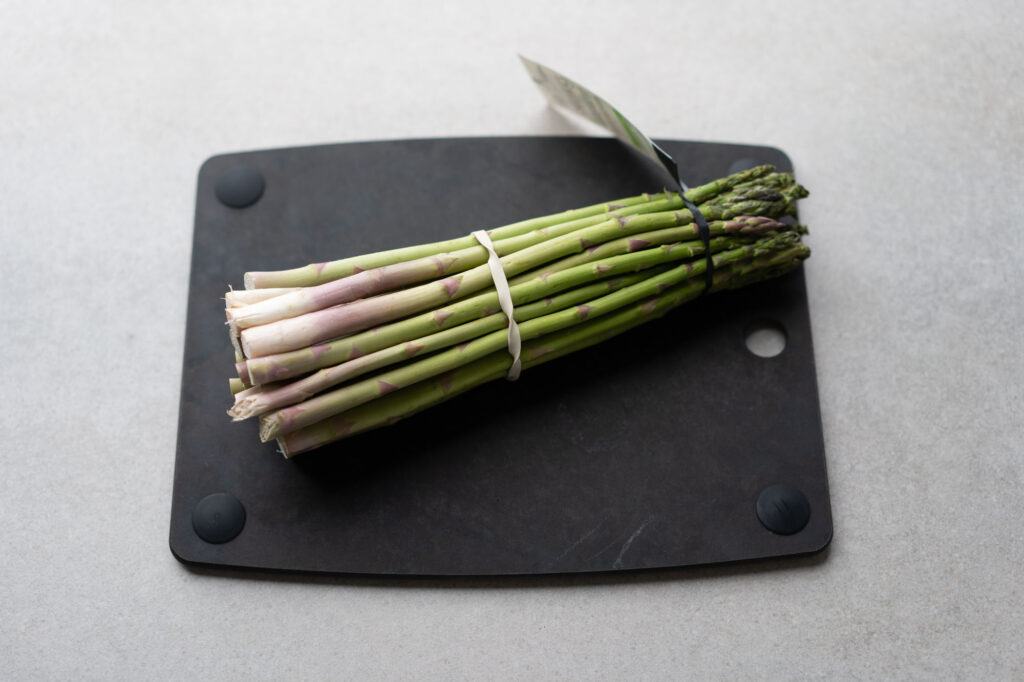
Whether you’re cooking up steak and mashed potatoes or scrambling eggs, asparagus is a delicious addition. Plus, it’s a low-calorie, high-fiber vegetable. Half a cup of cooked asparagus has 20 calories and 2 grams of fiber, which is 7% of your recommended daily amount.
But what’s the shelf life of asparagus and how can you tell when asparagus is bad? These are some of the telltale signs.
Signs Asparagus is Bad
Fresh asparagus is bright green with firm stalks. However, when it starts to pass its prime you’ll notice dull or dark coloration, mushy texture, and a rancid smell.
1. The tips are disintegrating
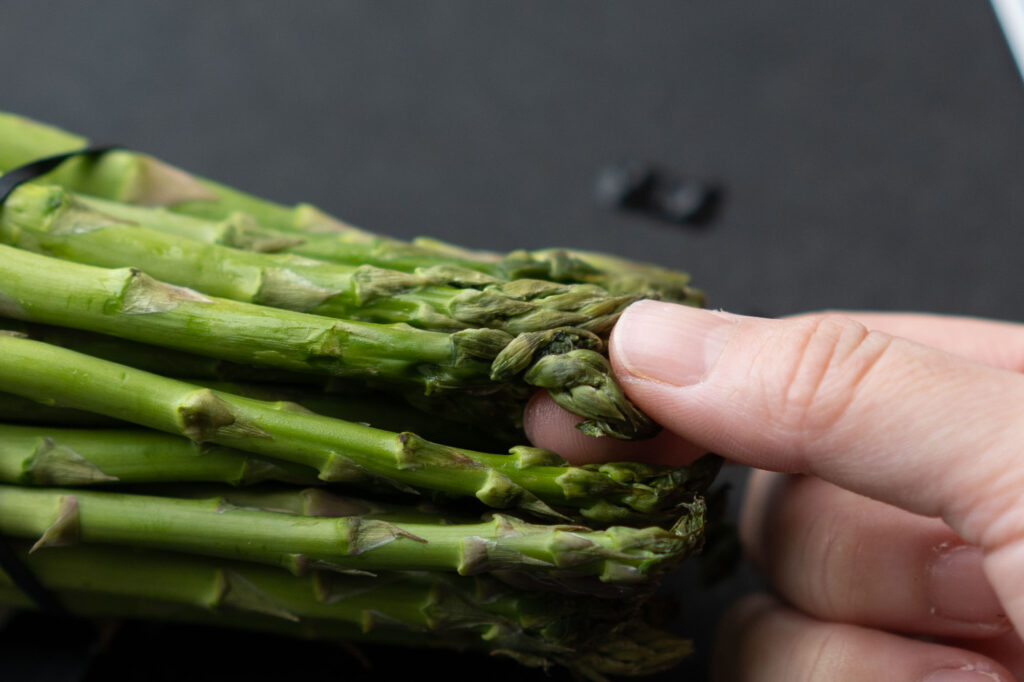
The tip of the asparagus is one of the first indicators that it’s starting to go bad. A fresh piece of asparagus has compact leaves and is a vibrant color. When it begins to go bad, the crown may turn dark and the leaves will also disintegrate. You can run your fingers over the crown and if it falls apart, the asparagus is likely bad or about to go bad.
The good news is that if the crown is bad, but the rest of the asparagus is firm, you can simply cut off the crown and cook the rest. I love to air fry or sauté my asparagus.
2. The stalks are mushy or limp
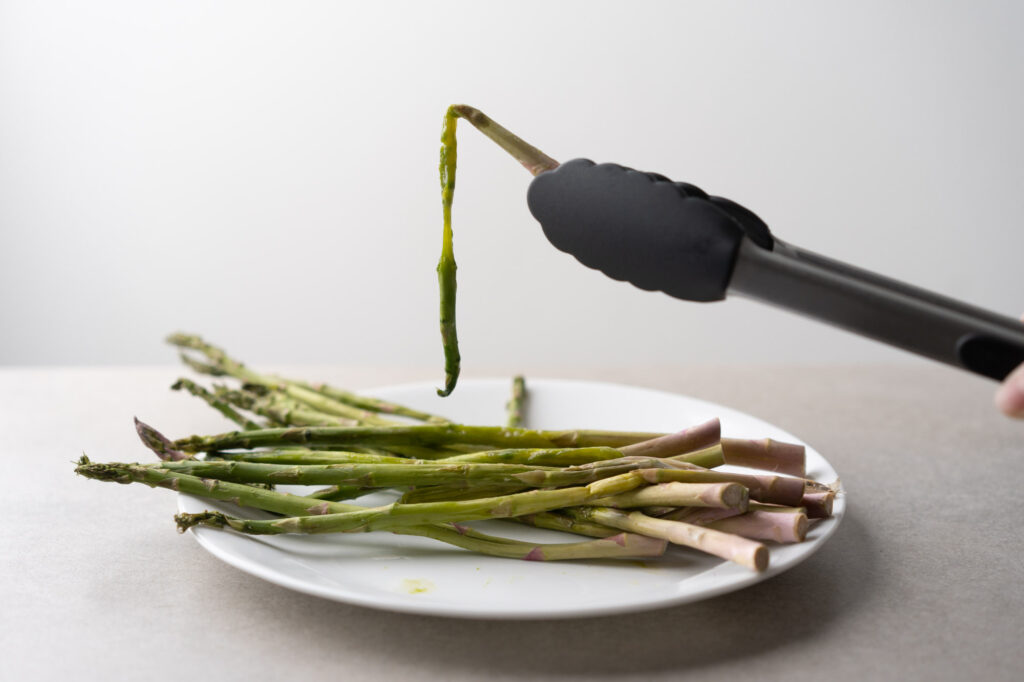
Asparagus stalks should be firm to the touch. If you squeeze them and the stalks are squishy (similar to a bad spot on a zucchini or cucumber), they’re probably bad.
Another sign asparagus is bad is if the stalks are wilted or limp. When you hold a piece of asparagus sideways it should be relatively straight. If it curves like a rainbow or otherwise seems wilted, think twice about eating it.
3. The asparagus is slimy
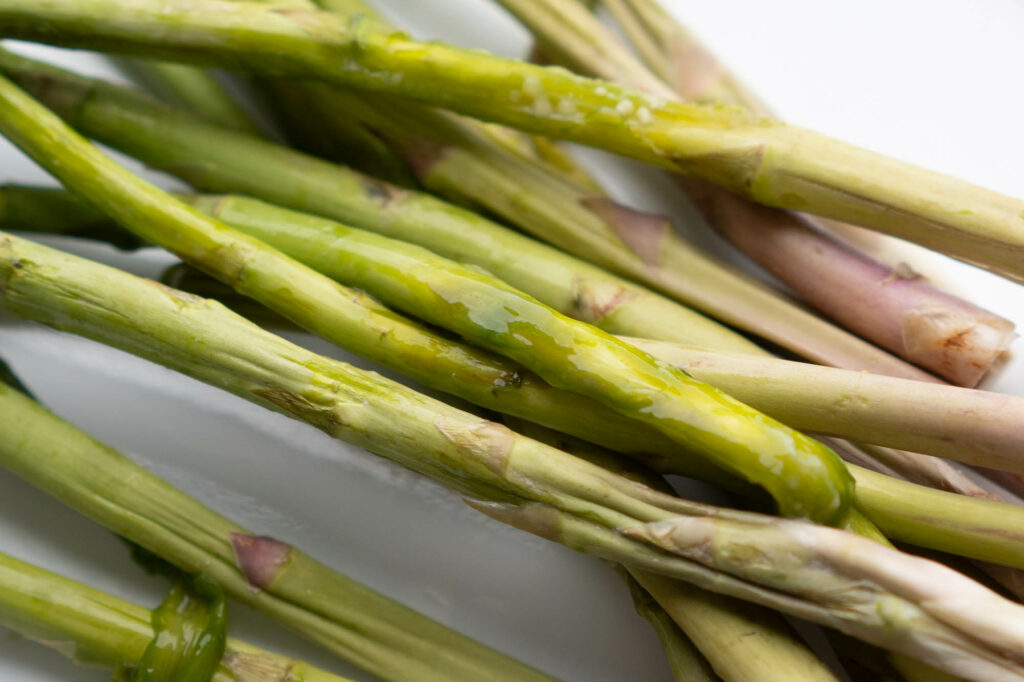
Like mushrooms, salmon, or really most foods, if the asparagus has a slimy outer layer, it’s no longer fit to eat. Why does food get slimy? Well, the moisture (both in the food and from condensation) and the nutrients (from the food) are a breeding ground for bacteria over time. That’s why it’s important to store your food properly and understand its shelf life. More on this below.
4. The asparagus has mold spots
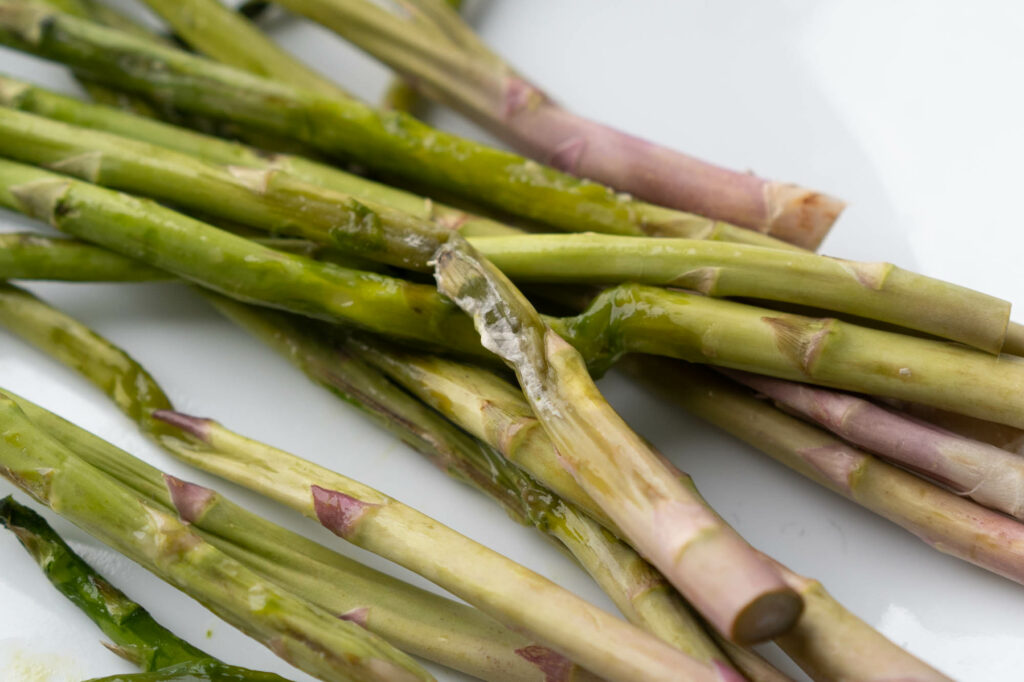
An obvious sign of food spoilage is mold. Look for white or green fuzzy spots on your asparagus. If you find them, but most of your asparagus doesn’t show signs of spoilage, some of the stalks may be salvageable.
According to the USDA, you can still use firm fruits and vegetables as long as you cut one inch above and below the mold spot. Why? Because it’s difficult for mold to penetrate dense foods. Soft foods, on the other hand, should be discarded.
5. The asparagus smells sour or rancid
Fresh asparagus shouldn’t have much of a smell. If it’s bad, it’ll smell sour or rancid. If you sniff your asparagus and your reaction is, “I’m not sure if this is good.” It’s probably not.
How to Pick Fresh Asparagus

Spring is the best season for asparagus, though in many grocery stores it can be found year-round. When you pick it, look for the following:
- Vibrantly colored – In most cases, asparagus will be green, but they can also come in white or purple varieties.
- A compact crown – The leaves on the crown of the asparagus should be closed and firm.
- Firm stalks – Avoid asparagus that are limp or shriveled. Also keep an eye out for cracks at the bottom of the asparagus or signs the asparagus are dried out.
- Uniform sizes – While a uniform bunch of asparagus isn’t a must, it will allow the asparagus to cook evenly.
How to Store Fresh Asparagus
Once you choose a fresh bunch of asparagus, it’s important to store it properly to optimize its shelf life. You want the asparagus to retain moisture for optimal freshness.
There are two ways to store asparagus to keep it fresh for longer. Do not wash or rinse the asparagus before storing, as this can lead to faster spoilage.
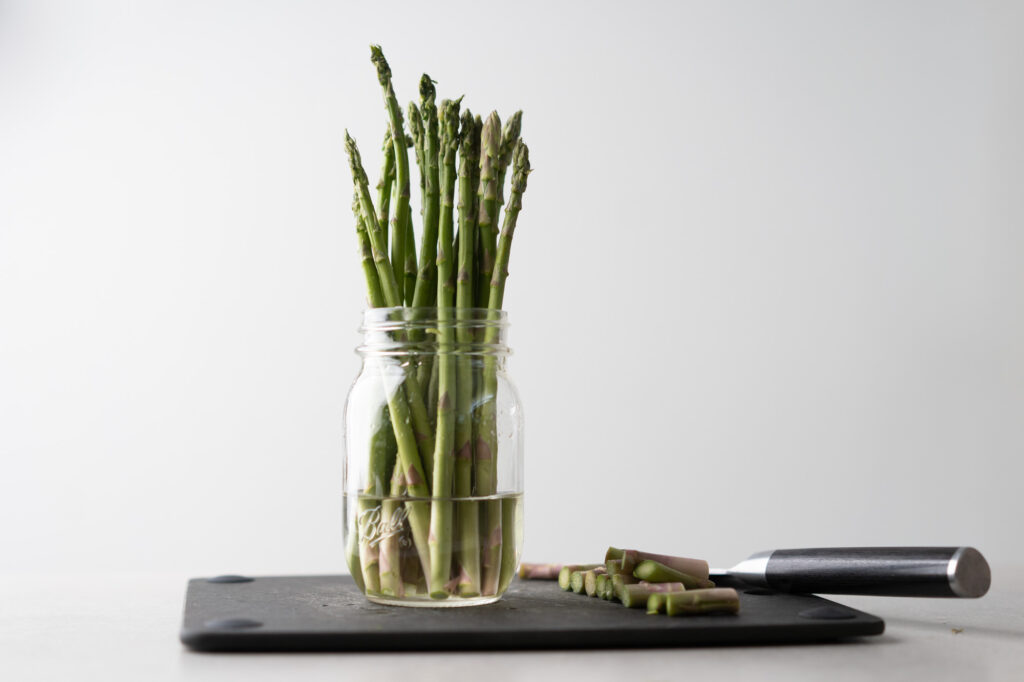
- Upright in water: Trim the bottom of the asparagus and place it upright in about an inch of water (a mason jar works great for this). Cover it with plastic wrap or a bag secured by a rubber band. Replace with fresh water when the water is murky or cloudy.
- Wrapped in damp paper towels: Storing the asparagus in water is optimal, but you could also wrap them in damp paper towels, place them in a sealed Ziploc bag, and put them in your vegetable drawer.
Avoid storing asparagus with fruits that release ethylene like apples, pears, or peaches. This can cause asparagus to prematurely toughen.
How Long Does Asparagus Last
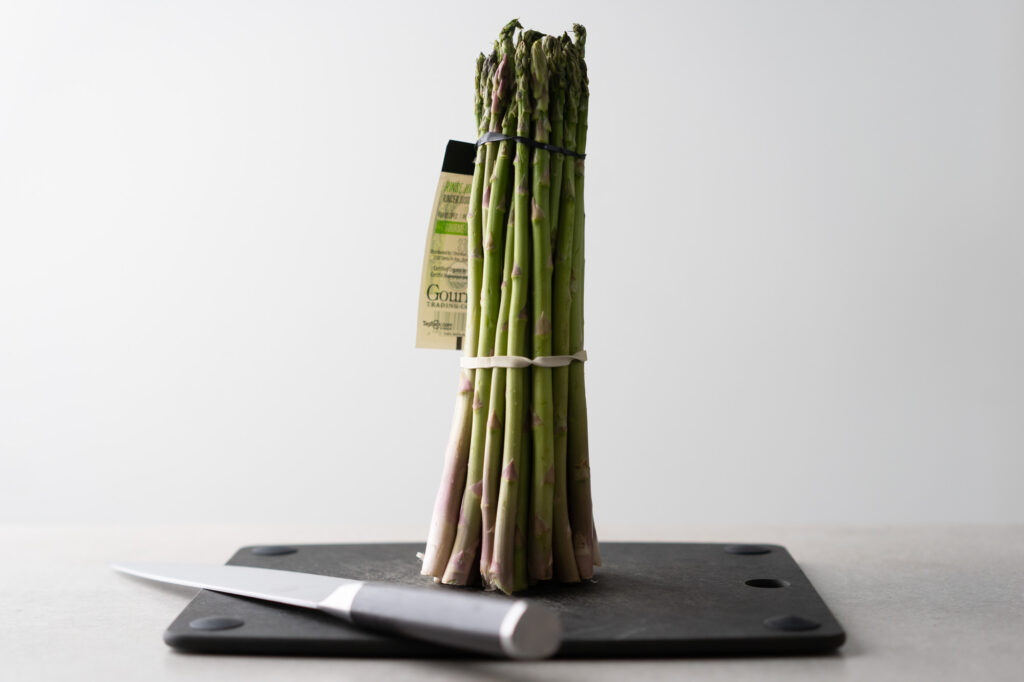
Asparagus can last up to a week in the refrigerator if you buy it fresh and store it properly. However, it’s best to cook within a few days of purchasing.
Cooked asparagus should be stored in an airtight container and can last three to five days in the refrigerator.
How to Freeze Asparagus
If you can’t use asparagus before it goes bad, you can freeze it. However, when you cook frozen asparagus it won’t be as crisp as fresh asparagus. To help retain the taste and texture as much as possible, you should blanch asparagus before you freeze it.
- Prepare a bowl of ice water.
- Bring a large pot of water to a boil.
- Place asparagus stalks in boiling water. It will take about 2 minutes to blanch a small stalk, 3 for a medium stalk, and 4 for a large stalk.
- Submerge in ice water to stop the cooking.
- Dry the asparagus completely before storing it in an airtight, freezer-safe bag.
If you’re not sure how long to blanch your asparagus, test one piece first. The color will become more vibrant and the stalk should feel semi-firm, but give slightly. If your stalk is semi-firm, but doesn’t taste raw, you have your timing right! If the stalk is limp, you boiled the asparagus for too long.
Frozen asparagus will last up to a year in the freezer, though keep an eye out for signs of freezer burn.
You do not need to defrost frozen asparagus before cooking.
You must be logged in to post a comment.